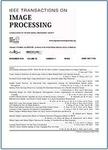版权所有:内蒙古大学图书馆 技术提供:维普资讯• 智图
内蒙古自治区呼和浩特市赛罕区大学西街235号 邮编: 010021

作者机构:Harbin Inst Technol Shenzhen Sch Comp Sci & Technol Shenzhen 518055 Peoples R China Peng Cheng Lab Shenzhen 518055 Peoples R China Nanjing Univ Sci & Technol Dept Comp Sci & Engn Nanjing 210094 Peoples R China Northwestern Polytech Univ Sch Artificial Intelligence OPt & Elect iOPEN Xian 710072 Shaanxi Peoples R China
出 版 物:《IEEE TRANSACTIONS ON IMAGE PROCESSING》 (IEEE Trans Image Process)
年 卷 期:2024年第33卷
页 面:3413-3427页
核心收录:
学科分类:0808[工学-电气工程] 08[工学] 0812[工学-计算机科学与技术(可授工学、理学学位)]
基 金:National Natural Science Foundation of China
主 题:Weakly supervised object detection misclassification semantics
摘 要:Weakly supervised object detection (WSOD) aims to train detectors using only image-category labels. Current methods typically first generate dense class-agnostic proposals and then select objects based on the classification scores of these proposals. These methods mainly focus on selecting the proposal having high Intersection-over-Union with the true object location, while ignoring the problem of misclassification, which occurs when some proposals exhibit semantic similarities with objects from other categories due to viewing perspective and background interference. We observe that the positive class that is misclassified typically has the following two characteristics: 1) It is usually misclassified as one or a few specific negative classes, and the scores of these negative classes are high;2) Compared to other negative classes, the score of the positive class is relatively high. Based on these two characteristics, we propose misclassification correction (MCC) and misclassification tolerance (MCT) respectively. In MCC, we establish a misclassification memory bank to record and summarize the class-pairs with high frequencies of potential misclassifications in the early stage of training, that is, cases where the score of a negative class is significantly higher than that of the positive class. In the later stage of training, when such cases occur and correspond to the summarized class-pairs, we select the top-scoring negative class proposal as the positive training example. In MCT, we decrease the loss weights of misclassified classes in the later stage of training to avoid them dominating training and causing misclassification of objects from other classes that are semantically similar to them during inference. Extensive experiments on the PASCAL VOC and MS COCO demonstrate our method can alleviate the problem of misclassification and achieve the state-of-the-art results.